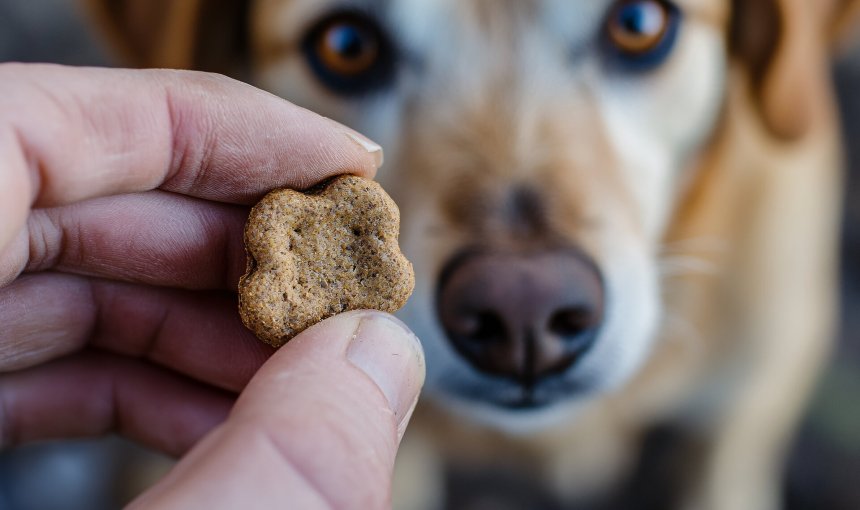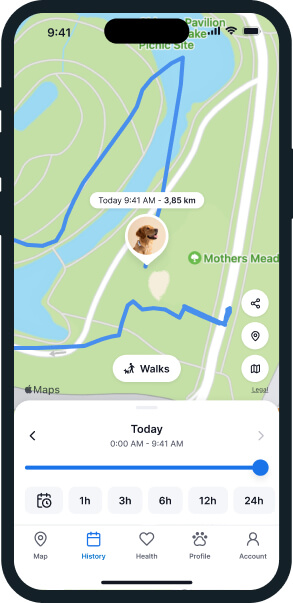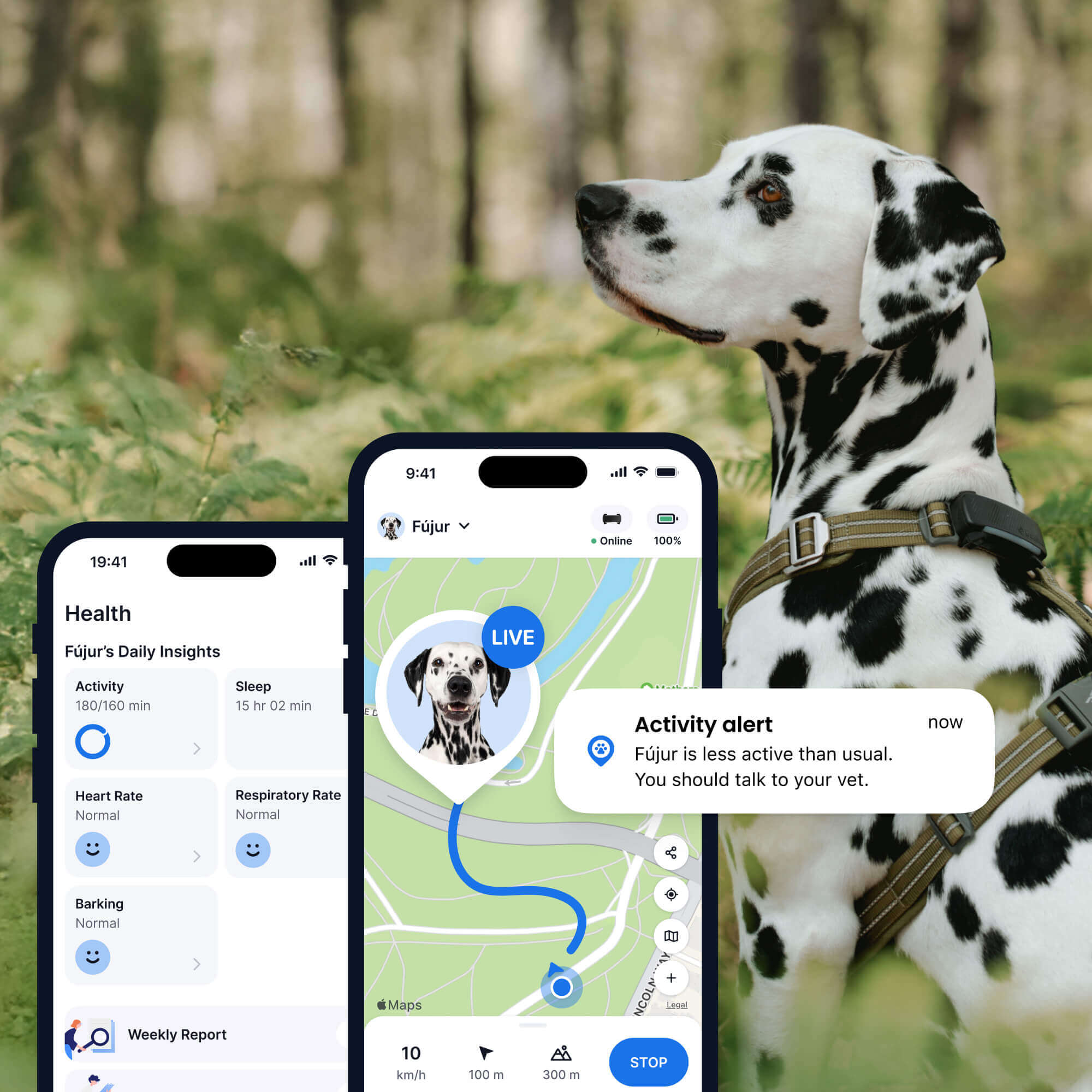Food Allergies in Dogs: When Sneaky Snacking Gets Harmful
While rare in dogs, food allergies can be an easy-to-miss health condition that you're better off avoiding - and planning ahead for. Here's what to watch out for.

You might’ve spent a small fortune on getting your dog the healthiest kibble or snacks. Which is where it gets doubly frustrating if your buddy’s suddenly itchy, dealing with skin trouble, or even losing their fur – all symptoms that could be a case of food allergies in dogs. So here’s how you can better protect your dog’s health and well-being and learn to spot the signs of potential health issues early.
Key Takeaways
Food allergies in dogs can be hard to spot. They cause symptoms like itchy skin, vomiting, and ear infections, which can also be signs of other health issues.
The most common foods dogs are allergic to are proteins like beef, chicken, or dairy, but they can also be allergic to dairy and even grains like corn or wheat.
To help your dog stay healthy, stick to a special vet-approved diet and make sure they don’t get into other food, like treats or flavored chews, that could make their allergies flare up.
You can use the Tractive smart dog tracker to see where your dog goes when they’re outside. The tracker’s map can help you find and avoid spots where your dog might be sneaking snacks from other people or getting into things that could cause any stomach trouble.

Always know your buddy is healthy & safe
Read moreHow do food allergies develop in dogs?
Much like in humans, food allergies in dogs may develop when their immune system mistakes a certain protein or ingredient as “dangerous”. This in turn might trigger an allergic reaction which could range from mild to life-threatening, depending on the severity. Dogs can develop allergies to foods they’ve been eating their entire lives. It usually takes around 2-3 months for them to become allergic to a food, though it can take longer.
On the bright side, food allergies are relatively rare in dogs. But you’re still better off staying informed and knowing what signs to look out for. Because unfortunately, food allergies can develop at any age and any time. There may also be a genetic component to developing dog food allergies. Retrievers, Terriers, and Spaniels may have an increased risk of these.
In fact, around a third of dogs with food allergies develop them before they reach 1 year of age. However, most are only diagnosed around 5 years! Which means, sadly, that many cases of food allergies in dogs may often go undiagnosed. So it might actually be way more common than we think.
What foods can trigger allergies in dogs?
Here are the main culprits your dog might be allergic to:
- Animal proteins
Including beef, chicken, eggs, lamb, pork, and fish. - Dairy
From milk, butter, yogurt, and cheese. - Grains
Including wheat, corn, soy, and rice.
Common symptoms of food allergies in dogs
Watch out for these signs if they occur around mealtimes:
- Itching excessively, especially around their feet, ears, groin, and face
- Experiencing skin problems, like rashes, redness (even around the feet), acne, and even scabbing
- Smelling weird, which might signal a yeast infection
- Shaking their heads constantly, which could signal an ear infection
- Experiencing diarrhea – or the opposite, straining to pass stools
- Losing their hair – and it isn’t related to any seasonal shedding
- Vomiting,
- Flatulent,
- Hyperactive,
- More lethargic than usual – or just more reluctant around walks or playtime
- More irritable, or even aggressive than normal
Now these symptoms aren’t necessarily only due to food allergies. Rather, they can overlap with other health conditions as well. What’s important is that these “obvious” symptoms might signal that your buddy’s system is already fighting an infection and trying to manage any pain and discomfort.
What to expect at your vet
Diagnosing food allergies in dogs can be a puzzle. There might be a whole bunch of reasons causing your dog’s symptoms. Which is why your vet might begin by ruling out any other causes, including flea allergies, bug bites, mange – or other causes of skin infections, including skin cancer or even hypothyroidism. So go prepared to answer questions including:
- When your dog’s symptoms began – and how long they’ve been persisting,
- Whether these symptoms worsen around meals,
- Whether your dog’s been diagnosed with allergies before (plus their medical history)
- What your dog is currently eating – including besides dog food. Meaning treats, table scraps, the whole deal.
- Whether you’ve changed your dog’s diet recently,
- Whether people besides you – like your neighbors or even strangers – give your dog treats or food
- If your dog has access to any areas they could find random food – or if they visited any new places, like a boarding facility, where they might’ve been fed something different than usual
How do elimination diets work?
Your vet might prescribe you an 8-12 week elimination diet to check whether a specific protein or ingredient is triggering your dog’s symptoms. This usually includes a limited-ingredient diet, which includes new proteins and foods your dog might not have eaten before. During these weeks, be extra careful to avoid feeding your dog any other food, treats, or table scraps. If your dog’s symptoms improve, they could’ve been triggered by a food allergy.
After that, your vet might recommend you slowly reintroduce any suspected allergens one by one – and monitor your buddy’s reaction. This can help them figure out what might be causing the allergies in the first place.
How you can manage your dog’s food allergies at home
Stick to your vet-prescribed diet
Once you’ve figured out if your dog’s allergies are linked to beef or grain or dairy, make sure to steer clear of these ingredients completely. Since you’re in control of their meals, make sure to follow your vet’s instructions to the T to avoid a relapse.
- Check the packaging of any commercial dog food labels for grains like corn, pork, or wheat as part of their ingredient list. If you notice any offending ingredients, it’s better to avoid buying these.
- Avoid feeding your dog any flavored substances, including dental chews or toothpaste – but also any medicines, vitamins, or supplements that include artificial flavors. All of these can potentially trigger your dog’s symptoms, especially if they’re still on an elimination diet.
- Feed your dog in a separate area from any of your other pets, so you can avoid them accidentally “sharing” food or water bowls.
In some cases, your vet might recommend a specific prescription diet that contains proteins broken down into smaller parts. (Or “hydrolyzed.”) So it’s less likely your dog’s body will react negatively to them. They might also recommend special probiotics or supplements to help your buddy deal with any stomach trouble and immune function.
LIkewise, always discuss with your vet before you buy a can of what’s branded as “hypoallergenic” dog food. Each dog has different allergies, so it’s not possible for any diet to be 100% hypoallergenic – i.e., unlikely to trigger allergic reactions. Your vet can best advise you what foods to stick to as your buddy recovers.
Follow any medication instructions to the T
Your vet might also prescribe you specific medication to deal with your dog’s other symptoms. Which might include:
- Anti-histamines, to help with the itching.
- Anti-inflammatory medication, to help with any gastrointestinal symptoms.
- Corticosteroids, which can help with skin infections, redness, and itching.
- Medicated shampoos to help soothe the skin.
- Antibiotics, in case of any other infection.
In all cases, make sure to follow the full course of medication. (Yes, even if your dog seems to be getting better.)
⚠️ Likewise, avoid giving your dog any medicine designed for humans – as these might contain ingredients toxic to dogs.
Monitor every morsel that goes into your dog’s mouth
If your dog is on a bit of a…well, “see food” diet (meaning they see food and they eat it) – now’s the time to be extra careful. Especially if your buddy’s prone to sneaking in some snacks from random places, which can expose them to allergens of all kinds. So watch out for food in uncontrolled environments, like:
- Any litter on the sidewalk on your daily walks together,
- Some extra treats from another, unwitting dog parent at the dog park,
- Your own backyard, where your buddy might have dug a hole to hide their snack stash,
- The trash, both indoors and outdoors,
- Or even while you have guests at home – especially relatives who are more generous with the treats than you are!
⚠️ Dogs are natural scavengers – and sadly, they might not be able to tell the difference between something that could trigger an allergic reaction and something that just smells and tastes “yummy.” And while others most likely don’t mean any harm if they do offer your buddy a biscuit or treat, it could possibly contain wheat or soy – which could trigger an allergy.
Where a smart dog tracker can help
You might be super careful about what you feed your dog at home, but what about when they’re out of your sight? That’s where a Tractive smart dog tracker can step in. It’s more than just a GPS tracker; it’s a helpful tool for figuring out what’s causing your dog’s issues and keeping an eye on their health.
Strapped to your dog’s harness or collar, you can now:
Find any sneaky snacking spots
Ever wonder if your dog is getting some secret snacks from a well-meaning neighbor or finding dropped food on their walks? The Tractive tracker’s Location History and Heatmap features can help you play detective. You can see exactly where your dog has been, and if they’re spending a little too much time at a specific spot – like a friend’s backyard or a particular bench at the park – it could be a clue that they’re getting fed something they shouldn’t. Pinpointing these secret snack spots is a huge first step to managing your dog’s allergies.

Keep tabs on your dog’s health
Beyond location, the Tractive smart tracker is a fantastic health monitor. It learns your dog’s unique activity and sleep patterns, so it can tell you when something is off. If your dog is having a bad reaction to an allergen, they might become less active or have trouble sleeping. The tracker’s Health Alerts will notify you of any major changes, which could be an early warning sign of a food allergy flare-up.
All this in one device – built for your peace of mind and the data you need to work with your vet to get to the bottom of your dog’s allergy issues.

Get health alerts for your dog
Our pups can’t always tell us if something’s wrong. But if their tracker detects unusual changes in their routine, you’ll get an alert, helping you catch potential issues early.
And if you’ve liked this post, share it with a friend or a loved one – and let’s help build a safer, kinder world for our furry friends together.




